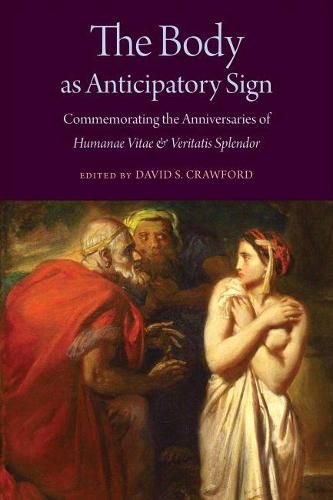Readings Newsletter
Become a Readings Member to make your shopping experience even easier.
Sign in or sign up for free!
You’re not far away from qualifying for FREE standard shipping within Australia
You’ve qualified for FREE standard shipping within Australia
The cart is loading…






At least formally, Paul VI’s Humanae Vitae merely reaffirmed the Church’s perennial teaching. Yet its publication in late July 1968 unleashed a torrent of criticism, perhaps unprecedented in its violence. This response laid bare the profound estrangement of that teaching from modern, liberal culture; it also provoked a fundamental ecclesial crisis. Misunderstanding and resistance to the teaching as a discrete norm of traditional sexual ethics could be anticipated. Less predictable perhaps were the fissures that soon emerged in wider and more obviously foundational areas of doctrine, including fundamental moral philosophy and theology, philosophical and theological anthropology, and even sacramental theology and ecclesiology. Granted that the forces in play were larger than the debate over Paul VI’s encyclical, the encyclical nevertheless appeared to have propelled them. Why would a seemingly minor part of Christian moral doctrine have such architectonic implications?
Twenty-five years later, St. John Paul II attempted to remediate these fragmenting tendencies in his own landmark encyclical, Veritatis Splendor. John Paul’s purpose was to unearth a bedrock of Catholic thought obscured at least in part by the tsunami following Humanae Vitae. He addressed crucial issues in fundamental moral thought, such as the relationship between freedom and truth, conscience and objectivity, moral thought and faith, the body and natural law, and nature and human action. While criticism of Veritatis Splendor was neither as sustained nor as violent as the attack on Humanae Vitae, the passage of time has witnessed attempts to at least profoundly qualify some of its central teachings. Yet in recent times, despite its importance within the canon of John Paul’s doctrinal writings, Veritatis Splendor has been largely neglected, even ignored.
The fiftieth and twenty-fifth anniversaries of these two great encyclicals in 2018 offered an opportunity to place them in the wider and deeper context. This is the goal of the essays collected in this volume. It seeks to offer a sustained reflection both on the shared ethical and anthropological teachings and missions of these seminal encyclicals and on the reasons why they have met such difficulty in our modern social and ecclesial environment.
$9.00 standard shipping within Australia
FREE standard shipping within Australia for orders over $100.00
Express & International shipping calculated at checkout
At least formally, Paul VI’s Humanae Vitae merely reaffirmed the Church’s perennial teaching. Yet its publication in late July 1968 unleashed a torrent of criticism, perhaps unprecedented in its violence. This response laid bare the profound estrangement of that teaching from modern, liberal culture; it also provoked a fundamental ecclesial crisis. Misunderstanding and resistance to the teaching as a discrete norm of traditional sexual ethics could be anticipated. Less predictable perhaps were the fissures that soon emerged in wider and more obviously foundational areas of doctrine, including fundamental moral philosophy and theology, philosophical and theological anthropology, and even sacramental theology and ecclesiology. Granted that the forces in play were larger than the debate over Paul VI’s encyclical, the encyclical nevertheless appeared to have propelled them. Why would a seemingly minor part of Christian moral doctrine have such architectonic implications?
Twenty-five years later, St. John Paul II attempted to remediate these fragmenting tendencies in his own landmark encyclical, Veritatis Splendor. John Paul’s purpose was to unearth a bedrock of Catholic thought obscured at least in part by the tsunami following Humanae Vitae. He addressed crucial issues in fundamental moral thought, such as the relationship between freedom and truth, conscience and objectivity, moral thought and faith, the body and natural law, and nature and human action. While criticism of Veritatis Splendor was neither as sustained nor as violent as the attack on Humanae Vitae, the passage of time has witnessed attempts to at least profoundly qualify some of its central teachings. Yet in recent times, despite its importance within the canon of John Paul’s doctrinal writings, Veritatis Splendor has been largely neglected, even ignored.
The fiftieth and twenty-fifth anniversaries of these two great encyclicals in 2018 offered an opportunity to place them in the wider and deeper context. This is the goal of the essays collected in this volume. It seeks to offer a sustained reflection both on the shared ethical and anthropological teachings and missions of these seminal encyclicals and on the reasons why they have met such difficulty in our modern social and ecclesial environment.